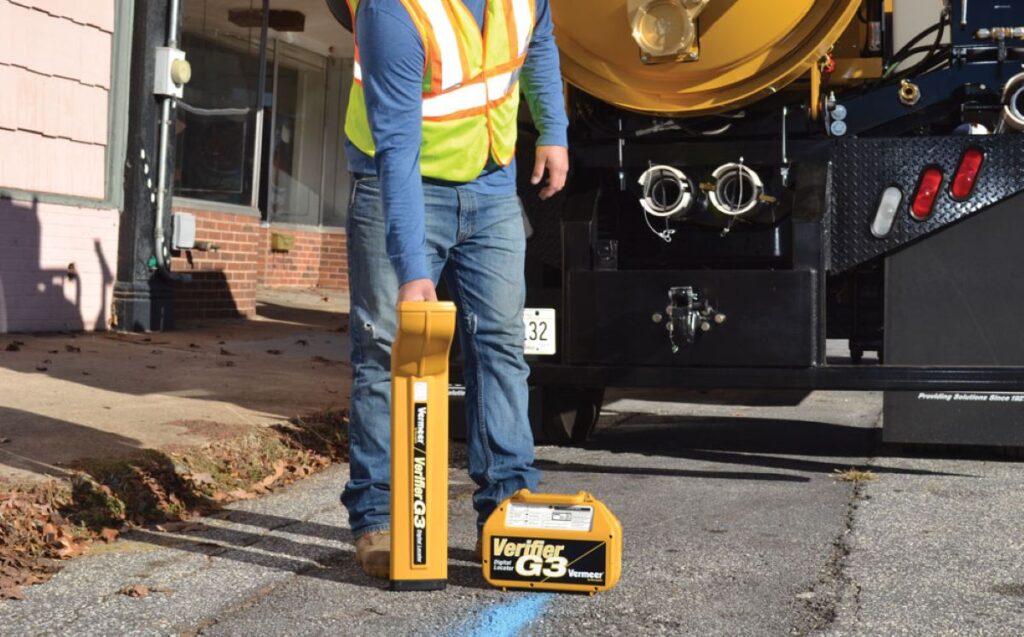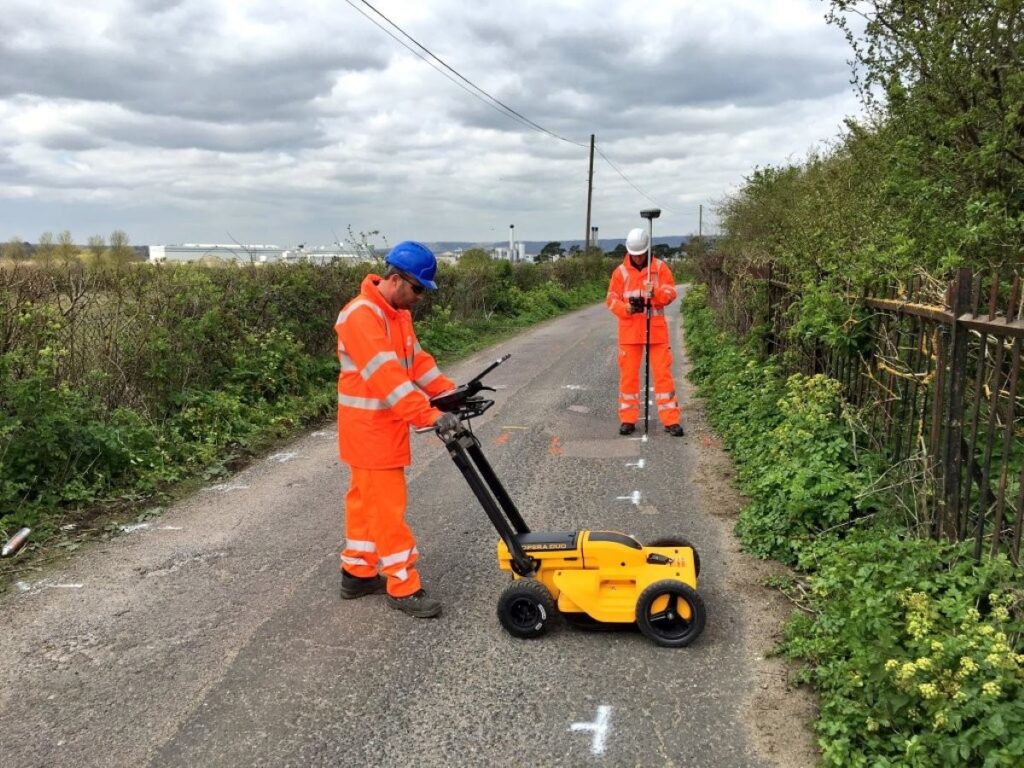Excavation projects, whether large or small, present a unique set of challenges and risks. One of the most critical steps in the excavation process is subsurface utility locating. This practice involves identifying and mapping the underground utilities that may be present in a given area. The importance of this process cannot be overstated, as it plays a crucial role in ensuring safety, reducing costs, and improving project efficiency.
The Importance of Subsurface Utility Locating
Subsurface utility locating is essential for several reasons. Firstly, it helps prevent accidents that can occur due to unmarked or unknown utilities. Secondly, it aids in reducing project delays and costs associated with damage to existing infrastructure. Finally, it promotes regulatory compliance, ensuring that excavators adhere to legal requirements regarding underground utilities.
Preventing Accidents and Injuries
One of the primary reasons for conducting subsurface utility locating is to prevent accidents and injuries. Excavation sites can be hazardous environments, and the presence of underground utilities such as gas, electricity, water, and telecommunications can pose significant risks. Striking a utility line can lead to serious injuries, fatalities, and even explosions in the case of gas lines.
By accurately locating and mapping these utilities before excavation begins, workers can take the necessary precautions to avoid damaging them. This not only protects the safety of the workers but also minimises the risk to the general public who may be in the vicinity of the excavation site. Furthermore, the psychological impact on workers who have been involved in such accidents can be profound, leading to increased anxiety and decreased morale on the job. Therefore, prioritising subsurface utility locating is not just a matter of compliance; it is a moral obligation to safeguard human life.
Reducing Costs and Delays
Another vital aspect of subsurface utility locating is its potential to save time and money. When utilities are damaged during excavation, the costs can escalate rapidly. Repairing damaged lines, dealing with utility companies, and addressing project delays can all contribute to a significant increase in overall project expenses.
Moreover, delays caused by unexpected utility strikes can lead to a domino effect, pushing back project timelines and affecting other scheduled work. By investing in subsurface utility locating, contractors can avoid these costly setbacks, ensuring that projects remain on track and within budget. Additionally, the use of advanced technology in utility locating, such as ground-penetrating radar and electromagnetic detection, allows for a more precise mapping of underground utilities. This technological advancement not only enhances the accuracy of the locating process but also provides a comprehensive overview of the subsurface landscape, enabling contractors to plan their projects more effectively and efficiently.
Methods of Subsurface Utility Locating
There are various methods used for subsurface utility locating, each with its advantages and limitations. The choice of method often depends on the specific requirements of the project, the types of utilities present, and the soil conditions.
Electromagnetic Locating
Electromagnetic locating is one of the most widely used methods for identifying underground utilities. This technique involves sending an electromagnetic signal through the utility line, which can then be detected by a receiver. This method is particularly effective for locating metallic pipes and cables.
However, it is important to note that electromagnetic locating may not be as effective for non-metallic utilities, such as plastic pipes. In such cases, additional methods may need to be employed to ensure a comprehensive understanding of the subsurface environment.
Ground Penetrating Radar (GPR)
Ground Penetrating Radar (GPR) is another advanced method for subsurface utility locating. This technique uses radar pulses to image the subsurface, allowing for the detection of both metallic and non-metallic utilities. GPR is particularly useful in complex environments where multiple layers of utilities may be present.
While GPR provides detailed information about the subsurface, it requires skilled operators to interpret the data accurately. Furthermore, its effectiveness can be influenced by soil conditions, such as moisture content and soil type.
Legal and Regulatory Considerations
In Australia, there are legal requirements and regulations governing excavation activities, particularly concerning the identification and management of underground utilities. Compliance with these regulations is essential to avoid legal repercussions and ensure the safety of workers and the public.
Understanding the Regulations
Excavators must be aware of the relevant legislation, such as the Work Health and Safety Act, which outlines the responsibilities of employers and workers in maintaining a safe work environment. Additionally, there are specific guidelines regarding the identification of underground utilities, which may vary by state or territory.
Failure to comply with these regulations can result in significant penalties, including fines and project shutdowns. Therefore, engaging in subsurface utility locating is not just a best practice; it is a legal obligation that must be adhered to in order to ensure compliance and safety.
Engaging Professional Services
Given the complexity of subsurface utility locating and the legal implications involved, many contractors choose to engage professional utility locating services. These specialists possess the necessary expertise, equipment, and knowledge of local regulations to conduct thorough and accurate utility surveys.
By partnering with professionals, contractors can ensure that their excavation projects are conducted safely, efficiently, and in compliance with all relevant laws. This collaboration can ultimately lead to a smoother excavation process and a more successful project outcome.

Case Studies: The Consequences of Neglecting Utility Locating
To illustrate the importance of subsurface utility locating, consider the following case studies that highlight the potential consequences of neglecting this critical step.
Case Study 1: Gas Line Strike
In a recent excavation project in Melbourne, a construction crew failed to conduct a thorough subsurface utility locating survey before beginning work. As a result, they struck an underground gas line, leading to a significant explosion. Fortunately, there were no fatalities, but several workers sustained injuries, and the incident caused extensive damage to nearby properties.
This incident not only resulted in immediate costs associated with repairs and medical expenses but also led to legal action against the construction company for negligence. The project was delayed for months as investigations took place, resulting in substantial financial losses.
Case Study 2: Water Main Damage
In another instance, a contractor in Sydney began excavation without properly identifying the location of a water main. The damage caused flooding in the surrounding area, disrupting local businesses and causing significant inconvenience to residents. The contractor faced hefty fines from the local council and was required to cover the costs of repairs and compensation for affected businesses.
These case studies serve as stark reminders of the potential risks and consequences associated with neglecting subsurface utility locating. The financial, legal, and reputational repercussions can be severe, highlighting the need for proper planning and execution in excavation projects.
Best Practices for Subsurface Utility Locating
To ensure effective subsurface utility locating, several best practices should be followed. These practices can help streamline the process and enhance the overall safety and efficiency of excavation projects.
Conducting Pre-Excavation Surveys
Before any excavation work begins, it is essential to conduct a comprehensive pre-excavation survey. This survey should include a review of existing utility maps, consultations with utility companies, and the use of advanced locating techniques such as electromagnetic locating and GPR.
By gathering as much information as possible before excavation, contractors can make informed decisions and develop a clear understanding of the subsurface environment. Checkout more about the role of engineering surveyors in infrastructure projects.
Training and Education
Investing in training and education for workers involved in excavation projects is crucial. Ensuring that all team members understand the importance of subsurface utility locating and are familiar with the techniques used can significantly reduce the risk of accidents and damage.
Regular training sessions and workshops can help keep workers updated on the latest technologies and best practices, fostering a culture of safety and diligence on excavation sites.

Conclusion
Subsurface utility locating is a vital component of any excavation project. By accurately identifying and mapping underground utilities, contractors can prevent accidents, reduce costs, and ensure compliance with legal regulations. The potential consequences of neglecting this critical step can be severe, as demonstrated by the case studies discussed.
Ultimately, investing in subsurface utility locating not only enhances the safety and efficiency of excavation projects but also contributes to the overall success and reputation of contractors in the industry. As the construction landscape continues to evolve, embracing best practices in utility locating will remain essential for ensuring safe and successful excavation operations.
